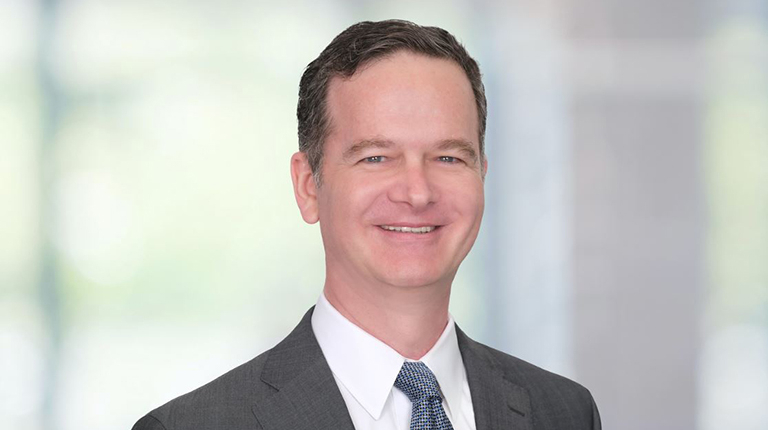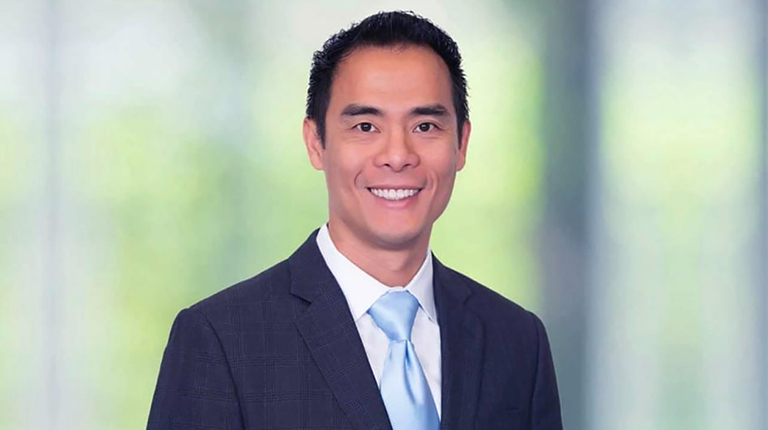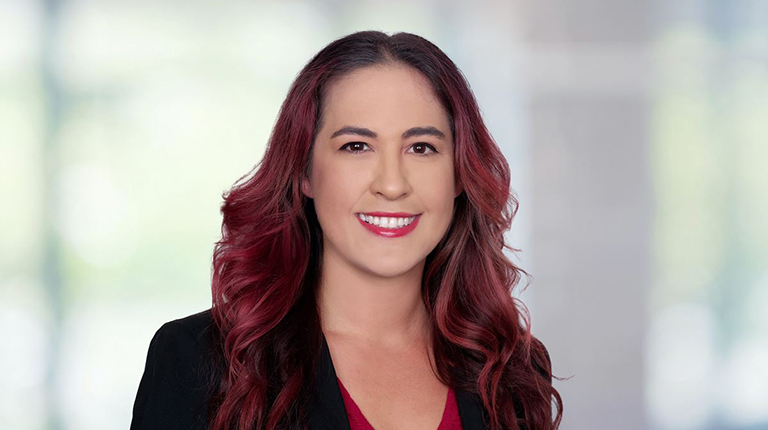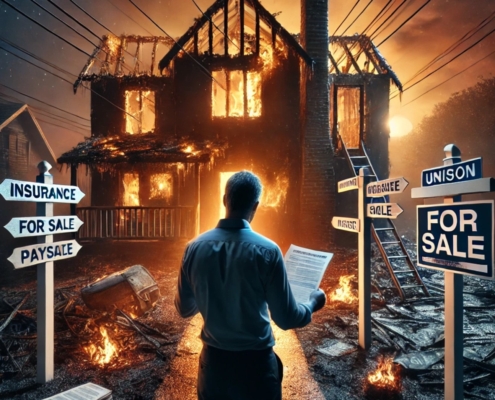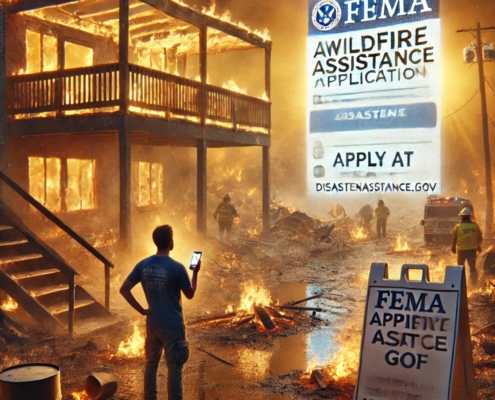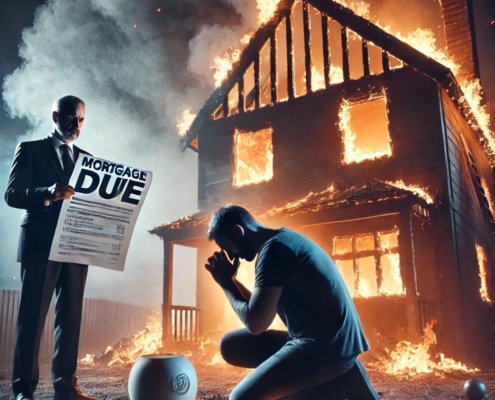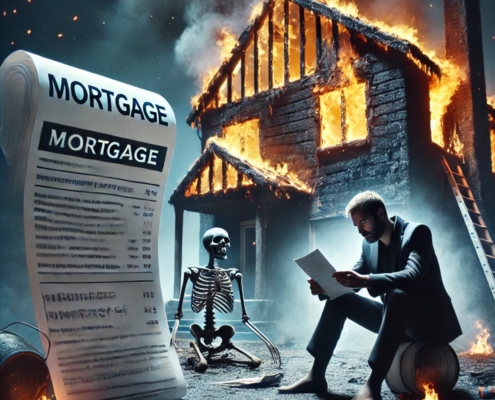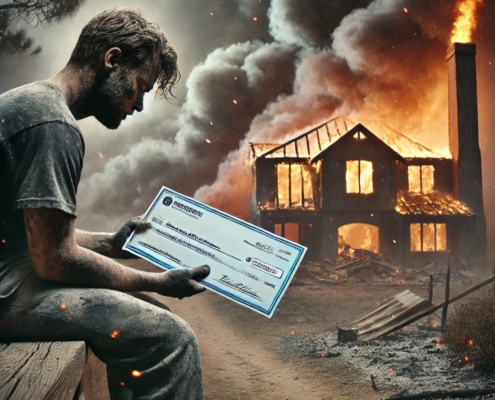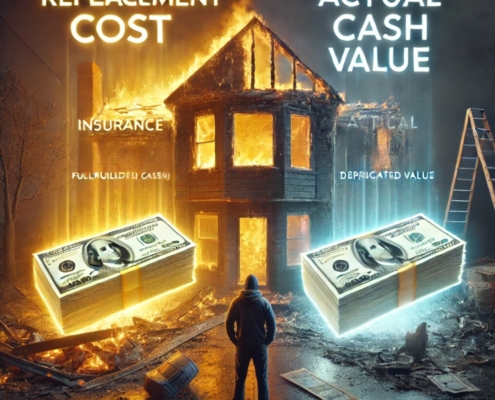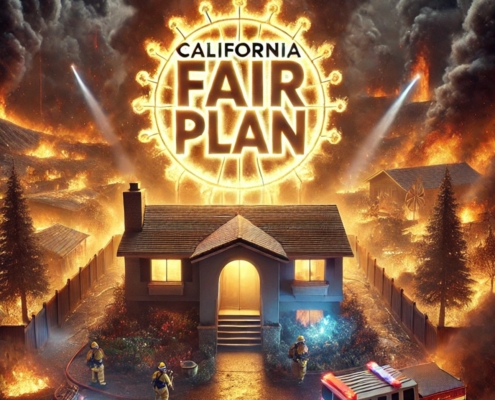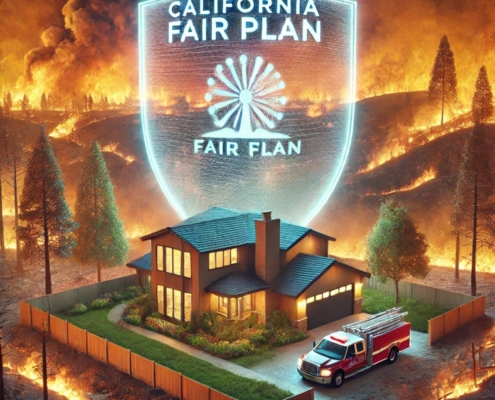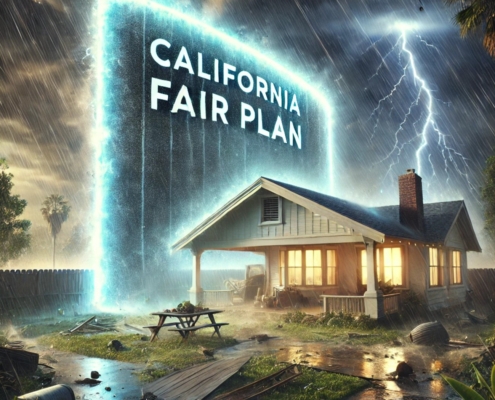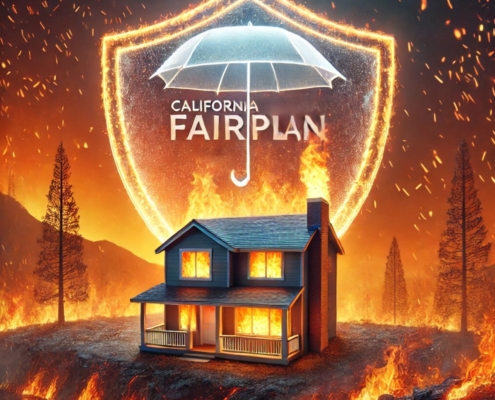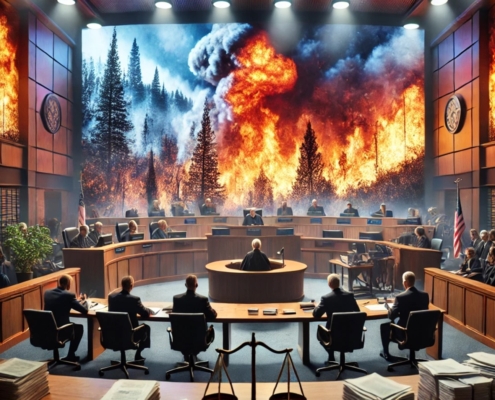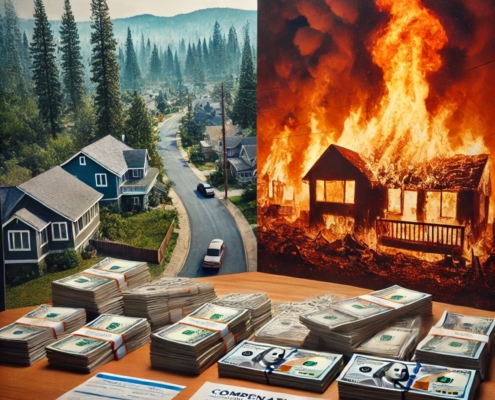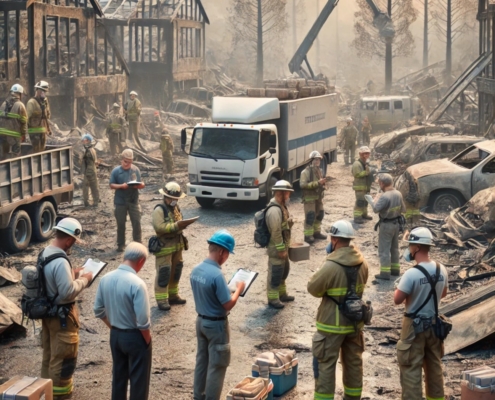Will California’s FAIR Plan Have Enough Cash to Pay Wildfire Claims?
Introduction
The California FAIR Plan serves as the state’s insurer of last resort, providing coverage to homeowners unable to secure insurance through the traditional market. In the months before thousands of Los Angeles homes went up in flames, property insurance companies dropped coverage in many neighborhoods of the city, citing the growing wildfire risks caused by climate change. As a result, a fast-growing number of California residents have switched to a state-backed “last resort” insurance plan. The recent Palisades and Eaton fires have further exacerbated these challenges, raising concerns about the Plan’s capacity to fulfill its financial obligations.
The challenges of insurance claims become even more acute in areas severely impacted by the wildfires:
-
- Pacific Palisades: The Palisades Fire burned over 23,713 acres starting on January 7, 2025, destroying homes and cultural landmarks.
- Altadena: The Eaton Fire devastated this community, destroying thousands of structures, including historic restaurants and businesses along Lake Avenue.
- Malibu: Parts of Malibu, known as the Malibu fire, suffered significant losses as the Palisades Fire extended into the area, leading to the destruction of beachfront properties.
- Topanga: This community faced evacuations and property losses as the Topanga fire spread through the region.
- San Fernando Valley: The Hurst Fire burned approximately 799 acres near San Fernando, causing evacuations and damage to properties.
Homeowners facing these challenges often seek support from our California fire attorney or our California wildfire attorney to navigate the complexities of insurance claims.
Financial Strains on the FAIR Plan
Verisk, a global analytics firm, has projected insured property losses from the Palisades and Eaton fires to be between $28 billion and $35 billion, marking one of the highest estimates in the industry. The FAIR Plan’s potential exposure is over $4 billion for the Palisades Fire and more than $775 million for the Eaton Fire. “They’re not going to have enough money to pay these claims,” said Amy Bach, executive director of United Policyholders, a nonprofit that advocates for insurance customers. As of January 10, 2025, the Plan had only $377 million available to pay out claims, in addition to $5.75 billion in reinsurance. This discrepancy between available funds and potential liabilities has led to questions about the Plan’s solvency. Our Los Angeles wildfire attorney often assists clients in understanding their rights and options in such situations.
Mechanisms to Address Funding Shortfalls
The FAIR Plan has mechanisms in place to address funding shortfalls. If additional funds are required to pay claims, the Plan may, with the Commissioner’s authorization, levy assessments against member insurers to fund claims and expenses. “If the FAIR Plan goes bankrupt — and it’s a good bet it will — the insurance companies will come after us to pay the debts that they owe,” said Jamie Court, president of Consumer Watchdog. Consumer advocates have expressed concerns that such surcharges could impose significant financial burdens on homeowners not directly affected by the fires. A single wildfire disaster could impose a surcharge of close to $1,000 on every Californian with home insurance coverage, Consumer Watchdog told state lawmakers in March. In these cases, our SoCal fire attorney can provide legal guidance to homeowners impacted by these costs.
Legislative and Regulatory Responses
In response to these challenges, California lawmakers are advancing legislation to enhance the FAIR Plan’s claims-paying capacity and expedite the insurance claims process for homeowners amid the Los Angeles wildfires. Additionally, the state has implemented regulatory changes allowing insurers more flexibility to adjust rates based on climate risks and to include the costs of reinsurance in premiums. These measures aim to encourage insurers to remain in the market and to provide more comprehensive coverage options for homeowners. “The private sector approach to property insurance is starting to crack under the weight of climate change, and the public can’t fill in the gaps under the existing structure,” said Doug Heller, director of insurance with the Consumer Federation of America. For affected individuals, our LA fire lawyer and our California fire lawyer can provide critical legal support.
Economic Impacts and Rising Premiums
Despite these efforts, the increasing frequency of billion-dollar disasters due to climate risks, such as wildfires and floods, continues to impact the housing market adversely. In California, a significant rise in wildfire-induced insurance claims has led to a hike in insurance premiums, contributing to declining property values. “California has had a real insurance crisis over the past five years with companies pulling back coverage, even leaving the state,” said Danielle Venton, a reporter covering insurance and climate impacts. This issue extends beyond California, with U.S. residential properties overvalued by $121 billion to $237 billion for flood risks alone. Our SoCal fire lawyer and our California wildfire lawyer often help residents and businesses mitigate these financial challenges.
Wildfires’ Impact on the Insurance Market
The recent wildfires in the Los Angeles area pose a significant challenge to California’s residential insurance market, already strained by major insurers’ withdrawal due to high fire risks and climate change impacts. The FAIR Plan said Friday it has received 3,600 claims so far and estimated that it covers 22% of the structures in the Palisades fire, representing potential exposure of more than $4 billion. Many homeowners rely on the state’s FAIR Plan, intended as a last-resort coverage option, which offers limited coverage and may face financial strains from the increase in claims. Our LA fire attorney and our Los Angeles wildfire attorney are working closely with clients to navigate the insurance claims process.
The Scale of the Wildfire Crisis
The situation is further complicated by the sheer scale of the current wildfires. “We’re all going to be paying for the insurance industry’s unwillingness to serve in those communities,” said Doug Heller, director of insurance with the Consumer Federation of America. As the fires continue to burn, the potential for a large number of simultaneous claims looms large. While it is still too early to determine the full impact of the Los Angeles fires on state policyholders, the massive damages will undoubtedly have a significant effect. Our Eaton fire attorney and our Altadena fire attorney provide essential services to affected residents, ensuring they receive the compensation they deserve.
Reliance on Reinsurance
A key component of the FAIR Plan’s structure is its reliance on reinsurance. Reinsurance is a financial safety net that enables insurers to transfer a portion of their risk to other insurers or reinsurers. The FAIR Plan’s reinsurance coverage—currently valued at $5.75 billion—plays a critical role in its ability to respond to catastrophic events like wildfires. However, the cost of reinsurance has been increasing due to the heightened risks associated with climate change. This raises concerns about the Plan’s ability to maintain adequate reinsurance levels in the future. Our California wildfire lawyer and our Eaton fire lawyer frequently address such issues in their cases.
Limitations of the FAIR Plan
The FAIR Plan’s limited scope of coverage also complicates matters. While it provides essential protection, the Plan does not offer comprehensive coverage options such as those available through the traditional insurance market. Homeowners insured through the FAIR Plan often need to purchase additional policies to cover risks not included in the Plan’s standard coverage. This can increase financial strain on homeowners already struggling with rising premiums. For advice and representation, many turn to our California fire attorney or our SoCal fire attorney.
Calls for Reform
Consumer advocacy groups have called for reforms to address these limitations. Some suggest expanding the FAIR Plan’s coverage options to include more comprehensive policies, while others advocate for increased state funding to support the Plan. These proposals aim to enhance the Plan’s ability to meet the needs of homeowners in high-risk areas without imposing excessive costs on policyholders statewide. Our Los Angeles wildfire lawyer and our SoCal fire lawyer are often involved in advocating for these crucial reforms.
Technological Innovations and Mitigation Measures
In addition to legislative and regulatory measures, technological advancements offer potential solutions to the challenges faced by the FAIR Plan. For instance, improved risk assessment tools can help insurers more accurately determine premiums based on individual property risks. Advances in fire prevention and mitigation technologies can also reduce the likelihood of catastrophic losses, thereby easing the financial burden on insurers and policyholders alike. Our LA fire lawyer collaborates with experts to advocate for policies that support these innovations.
Broader Implications and the Need for Climate Action
The broader implications of the FAIR Plan’s financial struggles extend beyond the insurance market. Wildfires and other climate-related disasters have significant economic and social impacts, affecting everything from property values to community resilience. In many cases, the inability to secure affordable insurance forces homeowners to sell their properties or relocate, leading to changes in the demographic and economic composition of affected areas. Our California fire lawyer and our Los Angeles wildfire lawyer play vital roles in addressing these challenges and advocating for sustainable solutions.
The FAIR Plan’s challenges also highlight the importance of addressing the root causes of climate change. While insurance reforms and market adjustments are essential, they represent only part of the solution. Efforts to reduce greenhouse gas emissions, improve forest management practices, and invest in renewable energy are critical to mitigating the long-term risks associated with climate change.
Conclusion
The increasing financial strain on the FAIR Plan underscores the need for a multifaceted approach to addressing wildfire risks in California. Policymakers, insurers, and homeowners must work together to develop sustainable solutions that balance the need for affordable insurance with the realities of a changing climate. This includes exploring innovative funding mechanisms, such as catastrophe bonds, which allow insurers to transfer risk to capital markets. Catastrophe bonds can provide an additional layer of financial protection for the FAIR Plan, ensuring it has the resources to respond to large-scale disasters.
Public-private partnerships can also play a crucial role in addressing the challenges faced by the FAIR Plan. By collaborating with private insurers, state agencies can leverage expertise and resources to enhance the Plan’s capacity to manage risks effectively. These partnerships can also facilitate the development of new insurance products tailored to the unique needs of high-risk communities.
Education and outreach efforts are equally important. Homeowners must be informed about the risks they face and the steps they can take to protect their properties. Programs that promote wildfire mitigation measures, such as creating defensible space around homes and using fire-resistant building materials, can significantly reduce the likelihood of catastrophic losses. Incentives for adopting these measures, such as premium discounts or tax credits, can encourage widespread participation.
In conclusion, while the California FAIR Plan has mechanisms in place to address funding shortfalls, the increasing frequency and severity of wildfires present significant challenges to its financial stability. “We are one event away from a large assessment,” Victoria Roach, president of the FAIR Plan, testified during a committee hearing. Ongoing legislative and regulatory efforts aim to bolster the Plan’s capacity to meet its obligations, but the broader issues of climate change and market dynamics continue to pose substantial risks to the state’s insurance infrastructure. A comprehensive and collaborative approach—encompassing policy reforms, technological innovations, and community engagement—is essential to ensuring the long-term viability of the FAIR Plan and the resilience of California’s communities in the face of growing climate risks.

